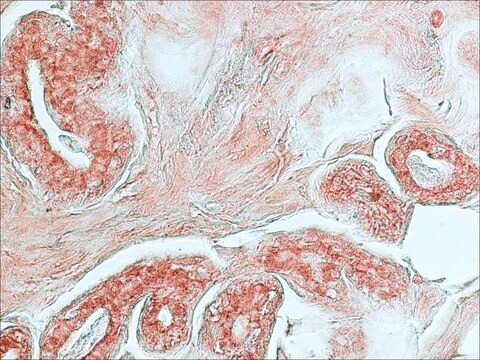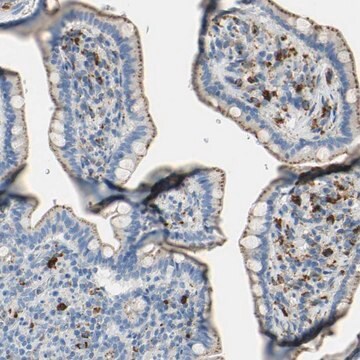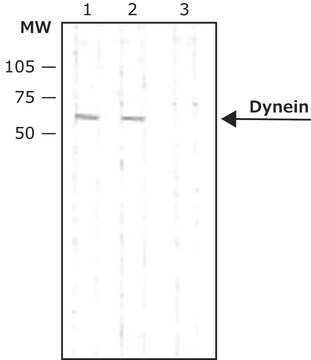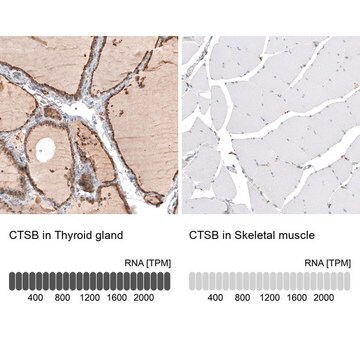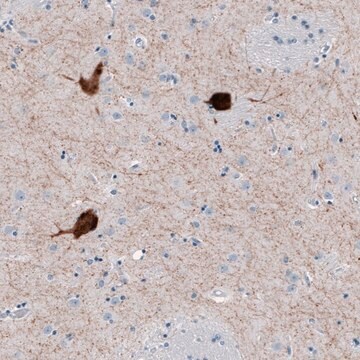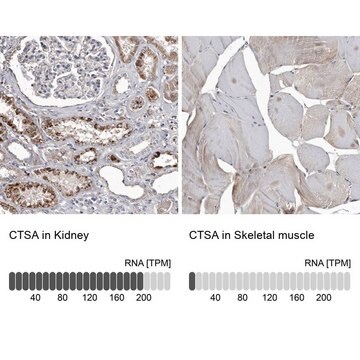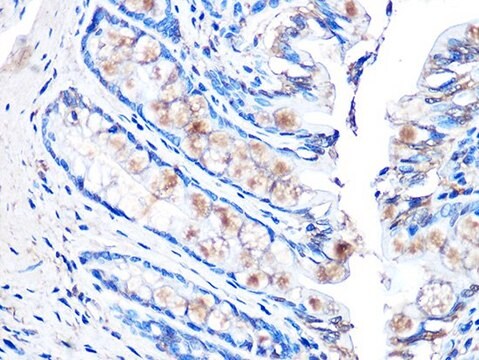SAB4200767
Anti-Cathepsin D antibody, Mouse monoclonal
clone CTD-19, purified from hybridoma cell culture
Synonym(s):
Anti-CTSD, cleaved into the following 2 chains: Cathepsin D light chain and Cathepsin D heavy chain
About This Item
IHC
immunofluorescence: 5-10 μg/mL using HeLa cells
immunohistochemistry: 10-20 μg/mL using heat-retrieved formalin-fixed, paraffin-embedded human liver sections
Recommended Products
biological source
mouse
Quality Level
antibody form
purified from hybridoma cell culture
antibody product type
primary antibodies
clone
CTD-19, monoclonal
form
buffered aqueous solution
species reactivity
human, rabbit
concentration
~1.0 mg/mL
technique(s)
immunoblotting: 2-4 μg/mL using human breast cancer MCF7 cell line
immunofluorescence: 5-10 μg/mL using HeLa cells
immunohistochemistry: 10-20 μg/mL using heat-retrieved formalin-fixed, paraffin-embedded human liver sections
isotype
IgG2a
UniProt accession no.
shipped in
dry ice
storage temp.
−20°C
target post-translational modification
unmodified
Gene Information
human ... CTSD(1509)
General description
Immunogen
Application
- immunoblotting
- immunohistochemistry
- immunofluorescence
Biochem/physiol Actions
Physical form
Not finding the right product?
Try our Product Selector Tool.
Storage Class Code
10 - Combustible liquids
Flash Point(F)
Not applicable
Flash Point(C)
Not applicable
Choose from one of the most recent versions:
Certificates of Analysis (COA)
Don't see the Right Version?
If you require a particular version, you can look up a specific certificate by the Lot or Batch number.
Already Own This Product?
Find documentation for the products that you have recently purchased in the Document Library.
Our team of scientists has experience in all areas of research including Life Science, Material Science, Chemical Synthesis, Chromatography, Analytical and many others.
Contact Technical Service